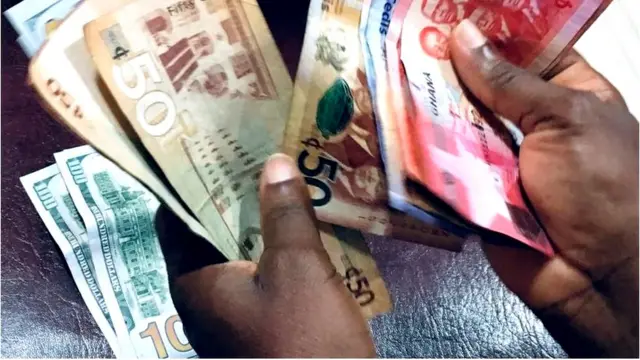
After months of relative calm, Ghana’s cedi has recently shown remarkable improvement, surprising many financial analysts. From February to April 2025, the currency had remained fairly stable, hovering around GHS15.50 to the US dollar. However, by early May 2025, it surged to GHS13.1, reaching its strongest position in over a year. This sudden rally has raised the question: Is this the start of a long-term recovery for the cedi, or is it just another temporary rebound?
This isn’t the first time the cedi has made an unexpected leap. In late 2022, the currency briefly strengthened from GHS14 to GHS9 before eventually sliding back to GHS12. What sets this current rally apart is its duration. This is the longest period of stability the cedi has experienced in over three years, signaling a possible shift in its trajectory.
Key Factors Behind the Cedi’s Recent Strength
The most immediate and impactful factor contributing to the cedi’s recent rise is a surge in Ghana’s export earnings. In the first two months of 2025 alone, the country exported over $2.3 billion worth of gold, its largest export, marking the highest earnings from gold exports in over a decade. This boost comes as global gold prices hit an all-time high, surpassing $3,000 per ounce. With gold being such a critical export for Ghana, this increase has greatly improved the country’s foreign exchange reserves, helping to support the cedi’s appreciation.
In addition to gold, cocoa—another major export commodity for Ghana—has also played a role in stabilizing the cedi. Cocoa export revenue increased significantly, rising from around $600 million to $800 million, due to rising global prices. The combined strength of these two key exports has provided much-needed foreign currency, easing pressure on the cedi and contributing to its recent strength.
The Role of Global and Domestic Factors
While Ghana’s exports are crucial to the cedi’s performance, global factors are also at play. One of the main external factors is the US dollar’s relative weakening. Due to President Donald Trump’s aggressive trade policies, the global demand for the US dollar has cooled slightly, contributing to a decline in its value. As the dollar weakens, currencies like the cedi have benefitted from the reduced pressure of a stronger dollar.
On the domestic front, the government of Ghana has taken significant measures to restore investor confidence in the economy. Notably, it has resisted calls for higher interest rates in the treasury bill market, sending a signal that the government is committed to controlling debt accumulation and managing fiscal discipline. This move has reassured investors and contributed to the overall positive sentiment surrounding the cedi.
Additionally, the Bank of Ghana has consistently maintained that its foreign reserves are intact and has not directly intervened in the foreign exchange market to manipulate the cedi’s value. The central bank’s gold reserves, which have increased to 31.37 tonnes, provide further support for the currency, acting as a hedge against external shocks. Despite this, there are signs that the central bank may have quietly assisted in stabilizing the cedi. According to reports, the Bank of Ghana injected GHS490 million into the market in April 2025 to help cover energy sector debts and other financial obligations. This move was seen as crucial in ensuring continued stability.
Broader Impact on Other Currencies
The cedi’s recent strength isn’t limited to just the US dollar. It has also gained ground against several other major currencies. For instance, the British pound has dropped from GHS20.60 in late April to GHS17.45, while the euro has fallen from GHS17.72 to GHS14.78. Similarly, the Canadian dollar has decreased from GHS11.00 to GHS9.40 over the same period. These declines across the board suggest that the cedi’s recovery is not isolated but is part of a broader trend in currency markets.
Challenges Ahead for the Cedi’s Recovery
Although the cedi’s recent performance offers some relief, its recovery is still fragile. If the global demand for the US dollar picks up again or if commodity prices, particularly gold and cocoa, experience a downturn, the cedi’s progress could quickly reverse. Moreover, while the recent rebound is encouraging, it remains to be seen if Ghana can sustain this positive momentum without relying on short-term factors or external economic winds.
The real challenge will be whether Ghana can maintain this stability and build on it through long-term economic reforms, diversification, and prudent fiscal management. Sustainable growth will require more than just favorable global conditions and one-off surges in export earnings.
Conclusion
For now, the cedi’s rise provides a welcome respite for Ghana’s economy. While the immediate factors behind its strength, such as increased exports and the weaker US dollar, are encouraging, the ultimate test will be whether Ghana can sustain the currency’s performance without relying on temporary boosts. Only time will tell if this rally is the start of a more lasting recovery or if the cedi’s fluctuations will continue.
This version provides a comprehensive view of the cedi’s recent performance, the factors driving it, and the potential challenges it may face. Let me know if you need further adjustments or details!







